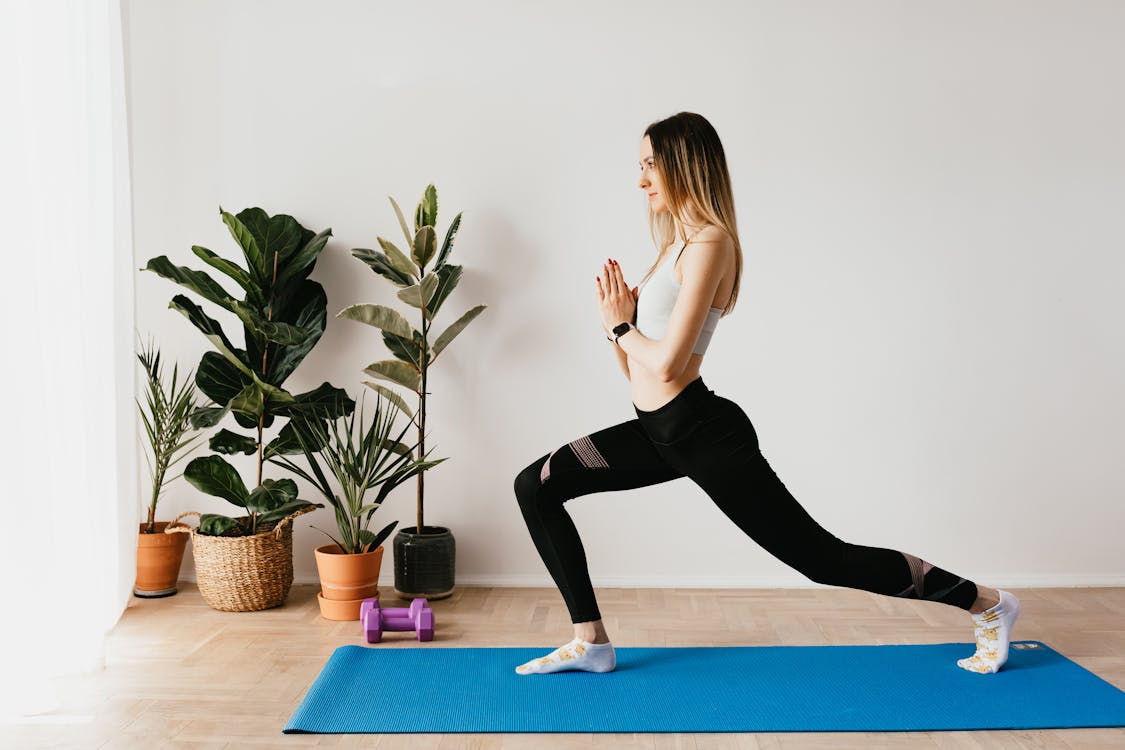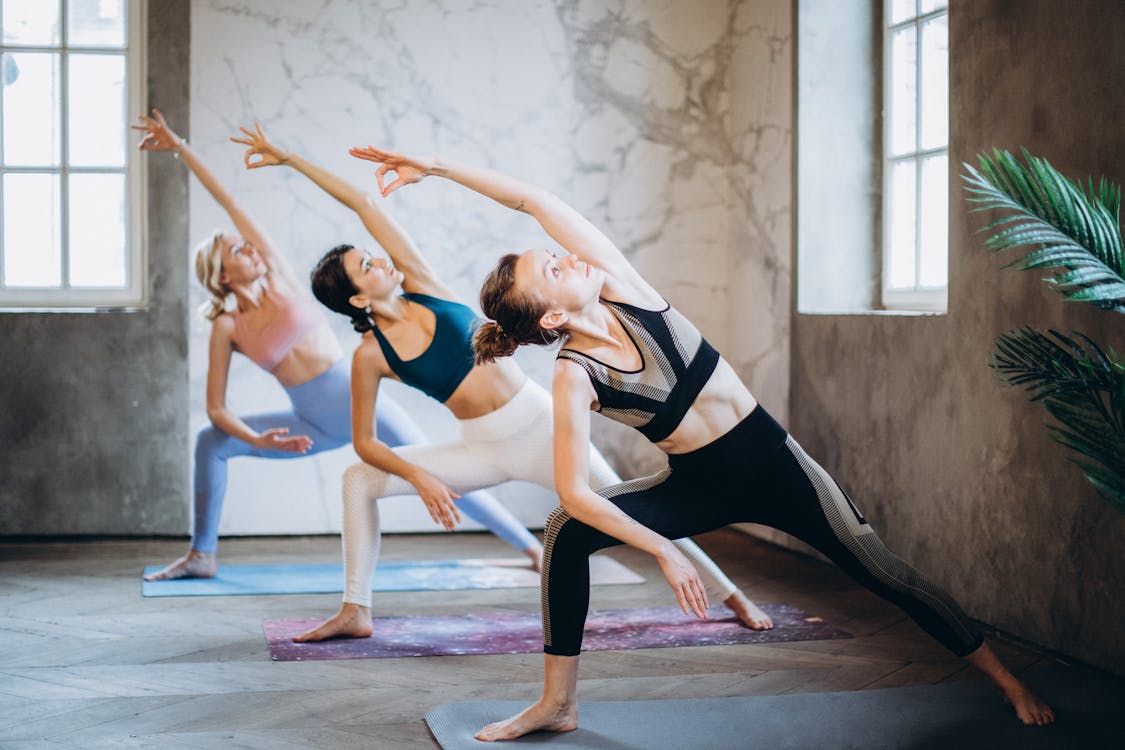Yoga, an ancient practice originating in India, has a profound connection with music. Historically, yoga practitioners incorporated chants, mantras, and rhythmic sounds into their routines to deepen meditation and spiritual experiences. These melodic elements were believed to synchronize with the body's energy flow, enhancing the overall practice.
{tocify} $title={Table of Contents}
The origins of yoga-music integration can be traced back to Vedic texts, where musical elements were considered a vital component of yoga. As yoga evolved through different eras and regions, the use of music continued, adapting to various styles and practices.
Understanding the Impact of Music on Yoga Practice
Psychological Effects of Music during Yoga
Music has a potent impact on the mind during yoga practice. Its ability to evoke emotions, alter moods, and induce relaxation creates a conducive environment for practitioners. Soothing melodies or rhythmic beats can help in reducing stress, elevating mood, and enhancing the overall mental state, fostering a deeper connection with the practice.
Enhancing Focus and Relaxation
The incorporation of music into yoga sessions aids in directing focus and attention. It acts as a guiding force, aligning movements and breath with rhythmic patterns, leading to a heightened sense of relaxation and concentration. This synchronization helps individuals achieve a meditative state more efficiently.
Yoga and Music: A Harmonious Blend
Types of Music Suitable for Different Yoga Practices
Different yoga styles resonate with specific music genres. For instance, gentle and meditative practices like Yin or Restorative yoga benefit from serene and ambient music that complements slow movements and extended holds. On the other hand, dynamic styles like Vinyasa or Power yoga may align well with rhythmic and upbeat tunes that match the flow of movements.
How Music Complements Various Yoga Styles
The compatibility of music with diverse yoga forms contributes significantly to the overall experience. The rhythm, tempo, and melody of the music synchronize with the pace and energy of the yoga practice, enhancing its essence. The choice of music can amplify the physical, mental, and spiritual aspects of each style, offering practitioners a more immersive journey.
Scientific Insights into Yoga and Music Fusion
Research-backed benefits of combining yoga with music
The amalgamation of yoga and music has been a subject of scientific interest, drawing attention to its potential benefits for mental and physical well-being. Research has highlighted several positive outcomes:
Stress Reduction and Mental Well-being
Numerous studies suggest that incorporating music into yoga sessions can significantly reduce stress levels. The harmonious blend of soothing melodies or rhythmic tunes aids in relaxation, promoting a calming effect on the mind. This combination has shown promise in alleviating anxiety, improving mood, and enhancing overall mental well-being.
Enhanced Cognitive Functions
Music's influence during yoga extends to cognitive functions. The rhythmic patterns and melodic sequences stimulate neural pathways, fostering improved concentration and mental clarity. This enhancement in cognitive abilities can amplify the meditative aspects of yoga practice, facilitating deeper introspection and focus.
Emotional Regulation and Mood Enhancement
The emotional impact of music is well-documented, and when integrated into yoga, it can elicit positive emotions. Certain music selections have demonstrated the ability to uplift moods, evoke feelings of joy, tranquility, or positivity, fostering a conducive environment for a fulfilling yoga experience.
Creating the Ideal Yoga-Music Atmosphere
Tips for selecting appropriate music for yoga sessions
Choosing the right music plays a pivotal role in enhancing the yoga practice. Considerations must be made regarding:
Tempo, Rhythm, and Genre Alignment
The tempo and rhythm of the music should align harmoniously with the pace and flow of the yoga practice. Slower tempos and gentle rhythms often suit relaxation-focused practices like Yin or Restorative yoga. In contrast, dynamic forms such as Vinyasa or Power yoga might benefit from higher tempos or rhythmic beats to complement the movement.
Melodic Tones and Instrumentation
Melodies and instrumentation evoke different emotions and energies. Soft and melodious tunes created by instruments like flutes, pianos, or strings can induce a calming effect, while percussive elements or nature sounds might invigorate and energize the practice. Selecting music that resonates with the desired ambiance of the session is crucial.
Setting up an ambiance for a harmonious experience
Creating an atmosphere conducive to both yoga and music involves more than just selecting the right tracks. Considerations like lighting, room temperature, and minimizing distractions contribute significantly to the overall ambiance. Dim lighting, comfortable room temperature, and a clutter-free space can further enhance the immersive experience of the fusion between yoga and music.
Personal Experiences and Testimonials
Real-life Stories: Impact of Music on Yoga Practice
Music's transformative influence on individuals' yoga sessions is often revealed through personal anecdotes. These stories illustrate how practitioners, across various yoga styles, have embraced music, showcasing its profound impact on their overall practice and well-being.
Success Stories: Enriching Yoga with Music
Testimonials from yoga enthusiasts who have integrated music into their practice highlight the positive shifts experienced. These accounts detail how the fusion of yoga and music has deepened their connection to the practice, enhanced focus, and elevated their spiritual experiences.
Addressing Common Misconceptions
Dispelling Myths: Music as a Distraction in Yoga
Common misconceptions about music's role during yoga are debunked. Emphasizing the ability of well-selected music to enrich rather than disrupt the yoga session, this section aims to clarify concerns surrounding distractions or disturbances.
Clarifying Concerns: Harmony in Yoga-Music Integration
Addressing prevalent doubts, this section focuses on aligning perceptions about music's compatibility with the meditative aspects of yoga. Insights provided aim to reassure practitioners about the seamless integration of music without hindering the practice.
Practical Tips for Incorporating Music into Yoga Routine
Selecting the Right Music for Different Yoga Styles
Different yoga styles resonate with various types of music. For serene practices like Yin or Restorative yoga, calming melodies or nature sounds often complement the slow-paced movements and longer holds. Conversely, dynamic practices such as Vinyasa or Power yoga might synchronize well with upbeat tunes or rhythmic music that mirrors the flow of movements. It's crucial to align the music's energy and tempo with the specific yoga style to create an immersive experience.
Setting the Ambiance for an Enhanced Experience
Creating the ideal ambiance is essential for the amalgamation of yoga and music. Dimming lights, using aromatherapy, or incorporating candles can enhance the overall atmosphere. Ensuring a comfortable and clutter-free space encourages a deeper connection to both yoga and the accompanying music. Practitioners are encouraged to experiment with different environmental elements to curate a space that fosters relaxation and focus.
Integrating Music Seamlessly into Yoga Sessions
Integrating music seamlessly requires synchronization between breath, movement, and rhythm. Starting with a slow tempo during warm-ups and gradually transitioning to faster-paced tracks can complement the various stages of the yoga session. Silences between tracks can allow for introspection and connection with one's breath. Practitioners are advised to create playlists in advance, ensuring a smooth flow that complements the entire session.
Potential Challenges and Solutions
Overcoming Obstacles in Synchronization
Synchronization between movements and music can pose a challenge, especially for beginners. To overcome this, practitioners can start with simpler movements and gradually synchronize with the music. Patience and practice play a vital role in achieving harmonious synchronization.
Addressing Distractions and Disruptions
Occasional distractions or disruptions, such as sudden volume changes or unsuitable tracks, might interrupt the yoga practice. To mitigate these, creating carefully curated playlists, ensuring the technology used is reliable, and previewing tracks beforehand can prevent interruptions and maintain focus during the session.
Strategies for a Harmonious Yoga-Music Fusion
Strategies involve consciously choosing music that aligns with the intended mood and energy of the yoga session. Experimenting with different genres, seeking guidance from experienced practitioners, and being open to adaptations in the music selection process can lead to a more harmonious fusion of yoga and music. Practitioners are encouraged to adapt and refine their approach to achieve a seamless blend that enhances their yoga experience.
Impact on Mind-Body Connection
Music as a Catalyst for Mind-Body Synchronization
The amalgamation of yoga and music significantly influences the mind-body connection, fostering a profound synchronization that transcends the physical realm. Music acts as a catalyst, guiding practitioners into a state of heightened awareness where breath, movement, and consciousness align harmoniously.
Within the realm of yoga, music serves as a conduit to facilitate a deeper connection between the mental and physical aspects. The rhythmic patterns and melodies synchronize with the cadence of breathing, encouraging practitioners to synchronize their movements, thoughts, and emotions. This synchronization cultivates a more profound mind-body connection, fostering an enhanced sense of self-awareness and unity.
Enhancing Mindfulness and Presence
As practitioners immerse themselves in yoga accompanied by music, the fusion creates an environment conducive to mindfulness and presence. The rhythmic flow of music guides the rhythm of the practice, allowing individuals to anchor themselves in the present moment. This union of yoga and music helps in detaching from distractions, bringing attention to the sensations within the body, and promoting a state of deep relaxation.
The synchronized rhythm of breath and movement, facilitated by music, enhances concentration and focus. It enables individuals to delve deeper into the postures, encouraging a more profound exploration of their physical capabilities and mental states. This heightened awareness fosters a deeper understanding of the mind-body connection, paving the way for a more holistic well-being.
Balancing Energy and Emotions
The emotional resonance of music complements the energy of different yoga practices. Soft, serene melodies encourage a sense of calmness and introspection, aligning well with practices like Hatha yoga, where longer-held postures require inner reflection. On the other hand, more upbeat and rhythmic tunes invigorate the energy during dynamic practices such as Vinyasa, syncing movement with breath for a flowing sequence.
Yoga-Music Fusion for Specific Yoga Practices
Harmonizing Music Selections with Yoga Styles
Tailoring music choices to specific yoga styles is paramount in optimizing the practice's benefits.
Hatha Yoga: Embracing slower-paced movements and gentle stretches, Hatha yoga pairs seamlessly with tranquil and melodious tunes. The serene music aids in relaxation and supports prolonged holds in postures, facilitating a deeper connection between body and mind.
Vinyasa Yoga: The dynamic nature of Vinyasa yoga, characterized by continuous movement, aligns well with more rhythmic and energizing music. The beats and tempo of the music synchronize with the breath, fostering a seamless flow between poses.
Yin Yoga: Known for its meditative and passive approach, Yin yoga harmonizes beautifully with soft instrumental music or nature-inspired sounds. This serene ambiance encourages practitioners to delve into deep stretches and introspection.
Understanding the essence of each yoga style and how music resonates with its energy aids practitioners in curating a conducive environment that amplifies the intended experience of their practice.
Tips for DIY Yoga-Music Blends
Curating Your Yoga-Music Experience
Crafting a personalized yoga-music blend adds a unique dimension to the practice, enhancing the overall experience. Here are essential tips for creating your customized fusion:
Understand Your Yoga Style: Recognize the essence of the yoga style you practice. Whether it's gentle and meditative or dynamic and energetic, understanding its nature helps in selecting appropriate music.
Explore Diverse Genres: Experiment with various music genres, from soothing instrumental melodies to ambient sounds or chanting mantras. Allow yourself to explore diverse musical compositions to find what resonates best with your practice.
Align Music with Intention: Connect the music's mood, tempo, and rhythm with the intention of your yoga session. For relaxation, opt for tranquil tunes, while for an invigorating practice, choose rhythmic beats that match your movements.
Create Playlists for Different Moods: Develop playlists tailored to different moods or phases of your yoga practice. Having playlists for relaxation, energizing flows, or meditation allows you to adapt the music to suit your practice's needs at any given time.
Experiment and Adapt: Be open to experimentation. Over time, your preferences and the synergy between music and yoga may evolve. Embrace the adaptability to refine and update your playlists accordingly.
Utilizing Technology and Resources
Numerous online platforms offer tools and resources to assist in creating personalized yoga-music blends:
Music Streaming Services: Platforms like Spotify, Apple Music, or YouTube Music provide an array of pre-made yoga playlists. You can explore these playlists or create your custom ones based on suggested tracks.
Yoga-Music Apps: Dedicated apps cater specifically to yoga-music fusion, offering playlists curated for different yoga styles. These apps often allow users to customize playlists according to preferences.
Sound Mixing Tools: For those inclined toward a more hands-on approach, sound mixing software or apps enable users to craft their unique blends by mixing various tracks or sounds.
Community Recommendations: Engage with yoga communities or forums where practitioners share their favorite yoga-music combinations. This exchange of ideas can inspire new selections for your practice.
The Role of Rhythm, Tempo, and Melody
Rhythm: Guiding Movement and Breath
Rhythm serves as a guiding force in syncing movement with breath during yoga practice. A rhythmic beat or pulse in the music can facilitate a seamless flow between yoga poses, synchronizing each movement with the inhalation and exhalation.
The rhythmic pattern of music acts as a metronome, helping practitioners maintain a steady pace and rhythm throughout the practice. This synchronization encourages a deeper mind-body connection, aligning breath and movement for a more immersive experience.
Tempo: Setting the Energetic Tone
The tempo of music influences the energy and pace of the yoga practice. A slower tempo fosters a calming ambiance, ideal for gentle practices like Yin or Restorative yoga, allowing practitioners to linger longer in poses and explore relaxation.
On the contrary, a higher tempo with faster beats suits dynamic practices such as Vinyasa or Power yoga, elevating the energy levels and promoting a more vigorous flow of movements synced with breath.
Melody: Evoking Emotions and Mindfulness
The melody of music evokes emotions and mindfulness during yoga practice. Soft, melodious tunes create a serene atmosphere, encouraging introspection and relaxation. They facilitate a sense of tranquility, aiding in centering the mind and body.
Conversely, uplifting melodies can inspire motivation and energy, encouraging practitioners to delve deeper into the practice with enthusiasm and vitality. The melodic progression guides the emotional journey, harmonizing with the flow of the practice to amplify the mind-body connection.
Conclusion: The Harmony of Yoga and Music
The amalgamation of yoga and music culminates in a harmonious synergy that transcends the realms of physical exercise and auditory indulgence. As practitioners immerse themselves in this fusion, they unlock a gateway to an enriched and transformative experience.
Yoga, with its profound focus on the mind-body connection and holistic well-being, finds a resonating companion in music. The intertwining of these two powerful mediums creates an environment that fosters mindfulness, presence, and synchronization.
The fusion of yoga and music serves as a catalyst for elevating the practice beyond the physical postures. It becomes a journey of self-discovery, where each breath aligns with melodies, each movement flows in rhythm, and each moment is lived with heightened awareness.
This union enables practitioners to delve deeper into their inner realms, exploring the nuances of their being with every chord and rhythm. It amplifies the sensations, emotions, and energies experienced during the practice, nurturing a deeper understanding of the mind-body connection.
The harmony between yoga and music extends its influence far beyond the mat, seeping into the fabric of everyday life. The synchronization cultivated during yoga sessions resonates in daily interactions, fostering a more profound sense of balance, mindfulness, and tranquility.
In essence, the fusion of yoga and music is not merely an auditory accompaniment to physical movements; it is a symphony that orchestrates a holistic experience, uniting the body, mind, and spirit in a melodious journey towards well-being and self-discovery. As practitioners embrace this fusion, they embark on a path that harmonizes their inner rhythms, unveiling the profound connection between the self and the universe.





